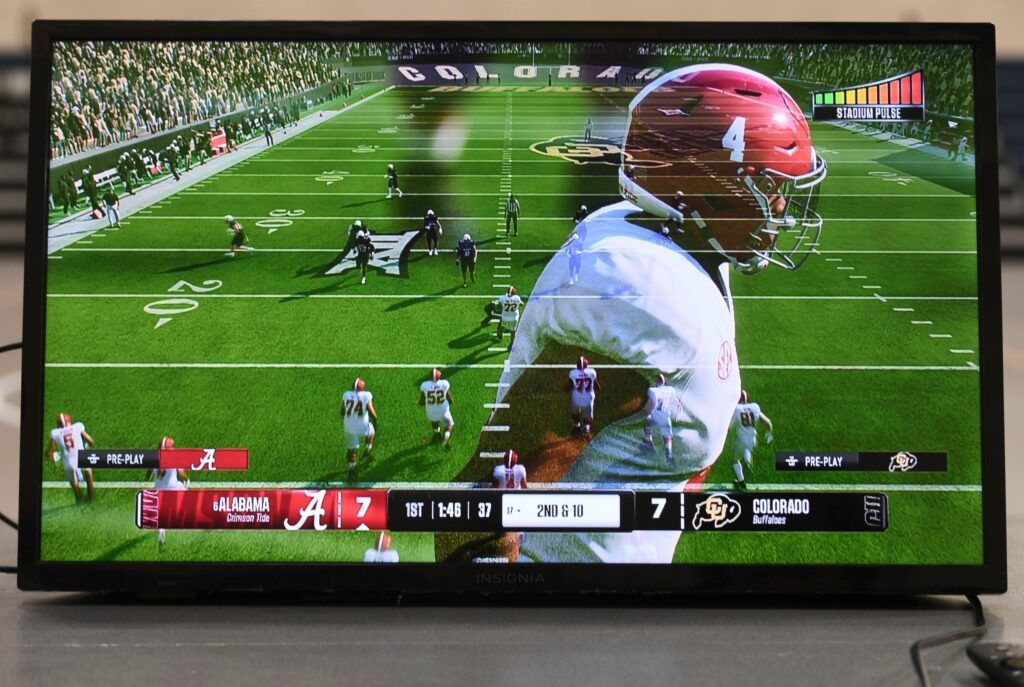The wait is finally over. EA College Football 26 has arrived, bringing with it a year’s worth of improvements and tweaks that could make or break your virtual gridiron dominance. With early access players already diving deep into the settings menu, some clear winners have emerged that separate the champions from the also-rans.
 Dive into Try out PFSN’s FREE college football playoff predictor, where you can simulate every 2025-26 NFL season game and see who wins the National Championship!
Dive into Try out PFSN’s FREE college football playoff predictor, where you can simulate every 2025-26 NFL season game and see who wins the National Championship!
What Settings Will Give You the Biggest Advantage?
Getting your settings dialed in correctly can mean the difference between celebrating touchdowns and watching helplessly as your season slips away. Here are the five crucial adjustments that will transform your College Football 26 experience from frustrating to phenomenal.
Skill Level Difficulty: Finding Your Sweet Spot
The eternal struggle in sports gaming comes down to one question: how hard should this actually be? EA Sports College Football 26 offers multiple difficulty levels, but two stand out as the most practical choices.
Heisman difficulty represents the ultimate test for seasoned veterans who’ve been calling plays since the original NCAA Football days. This setting demands perfect timing, flawless reads, and zero margin for error. However, it’s only recommended for players who’ve mastered every aspect of football gaming over many years.
MORE: Breaking Down 5 of the Coolest New Additions in EA Sports College Football 26
All-American difficulty strikes the perfect balance for most players. This setting provides genuine challenge without the soul-crushing difficulty that can make games feel more like work than entertainment. You’ll face realistic defensive schemes and need solid fundamentals, but mistakes won’t automatically doom your entire drive.
Kicking Control Scheme: Don’t Leave Points on the Board
Field goals and extra points can decide close games, making your kicking setup absolutely critical. The control scheme you choose will determine whether you’re automatic from inside the 40 or constantly shanking kicks wide.
Tap and Tap emerges as the clear winner for most players. This scheme allows you to reset your finger position between the timing elements, giving you better control over both power and accuracy. The ability to lift your finger and reposition creates more consistent results.
Tap and Hold can work for some players, but it requires more precise finger control throughout the entire kicking motion. Most players find this more difficult to master, especially under pressure situations where every point matters.
Wear and Tear: Managing Realism vs. Fun
College Football 26 introduces a more sophisticated wear and tear system compared to its predecessor, but this enhanced realism comes with a cost. Players now deal with more frequent injuries and fatigue that can derail entire seasons.
The default setting of 50 often feels excessive, particularly during dynasty mode where you’re managing multiple seasons. Reducing this to 40 maintains some realistic consequences for hard hits and overuse while preventing the constant injury carousel that can make the game tedious.
For players who prefer focusing purely on strategy and gameplay, turning off wear and tear entirely remains a viable option. This eliminates the frustration of losing key players to random injuries while keeping the focus on football fundamentals.
Reticle Speed: Precision Under Pressure
The reticle speed setting controls how quickly your yellow targeting cursor moves when using the left stick. This seemingly minor adjustment can dramatically impact your passing accuracy and overall offensive effectiveness.
Setting the reticle speed to seven provides an excellent starting point for most players. This speed allows for precise adjustments without being so slow that you can’t react to changing defensive coverage. You can make quick corrections while still maintaining the control needed for tight window throws.
Players should experiment with this setting during practice mode to find their personal preference, but seven consistently works well across different play styles and experience levels.
Passing Type: Taking Control of Your Offense
EA Sports College Football 26 offers four distinct passing types, each with unique advantages and learning curves. Your choice here will fundamentally change how you approach every offensive snap.
Revamped Passing stands out as the most rewarding option for players willing to invest time in learning its nuances. This system provides significantly more control over pass placement, allowing you to thread balls into tight coverage and make throws that other passing types simply can’t execute.
The main drawback involves the invisible reticle, which means you can’t see exactly where your pass will go until you commit to the throw. This takes considerable practice to master, but the payoff in terms of passing precision makes the learning curve worthwhile.
Players who prefer immediate visual feedback might initially struggle with Revamped Passing, but those who stick with it often find their offensive capabilities dramatically improved once they adapt to the system.
These five settings form the foundation of a winning College Football 26 setup. While personal preferences will always play a role, these adjustments address the most common pain points that prevent players from reaching their full potential on the virtual gridiron.
